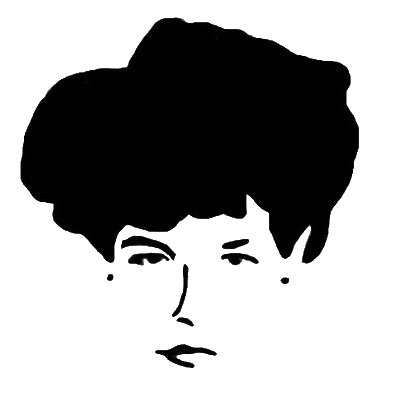
Click here to read Part One.
Lauren Spohrer: Why do you say you like to make pieces that can be easily overlooked? I'm thinking of "The Present" which seems pretty easy to miss.
Maria Anwander: I prefer the feeling of discovering something rather than getting something presented on a golden platter. But I have less inconspicuous works as well. "The Present," is a stone with a weight of about two tons, which I brought with a forklift and some helpers to the city center of Luxembourg in a cloak-and-dagger operation. The "donation" was neither announced nor denied by the Luxembourg authorities. Inhabitants who walked by daily couldn't overlook the piece as it had quite a size and was placed in a very frequented place; it also had kind of a disturbing function. I guess some of the people walking by, if not reading the engraved text carefully, might look around for a "missing" artwork and thought that the text of "The Present" was an explanation for an artwork, which was meant to be placed at the top of the stone (it's shape looked a bit like a podium). But the stone itself was the artwork, functioning as its own label at the same time. The engraving on the stone showed my name, the title, measurements, material as well as the fact that it was "donated to the city of Luxembourg in 2012."
LS: Some of your work asks the viewer to read caption text, and think about location or context. How is readinga piece different from looking at it?
MA: In general, I think, for a work of art itself, it is unimportant if it is shown in the street or in a museum. A painting remains a painting, even if it hangs hidden from the public in a private room, but it only becomes an artwork in interaction with the viewer. In my opinion, there are two important states in the development of an artwork, which collide or overlap and only together cause the consideration of a thing or a creative act as art. The first state is the artist’s idea for the piece and its progress, which includes the anticipation of the second state – the perception. And here a title or text can help the artist to set an impulse, which leads the viewers’ interpretation into a specific direction. Curatorial labels can be seen as medium to reach the viewer directly and help to understand the artists’ intentions. There are loads of works, which do not need any text or explanation, but some artworks get even better with a certain title and other works remain just as the formal expression of their title; text-pieces for example where the artwork is it’s title and vice versa. For many of my works the art context is extremely important as my interrogations often address the art world itself. For those works it wouldn’t make sense to show them out of a specific context as they would not be able to ask questions where I want them to be asked. But there are exceptions as well, one beside "The Present" was a performance and intervention I created in particular for public spaces of New York, México City and Vienna. I mounted three plaques, one in each city, every plaque explained the performance, which was nothing else but traveling from one city to the another to mount each plaque. Also mentioned was that the work was state-financed. This deliberately created transparency was meant to provoke a discourse between those who work in the field of art with their dependency on public support and the rest of the majority of society, whose attitude about state funding often is diametrically opposed. As well it allowed a comparison between the different systems of cultural sponsoring for example between the US and Europe.
Anwander placed 10,953 curatorial labels (representing the museum's entire collection) on the fence of Austria's Vorarlberger Landesmuseum while it was under construction and closed to the public.
This is an ongoing email conversation between Lauren Spohrer and Austrian artist Maria Anwander.
